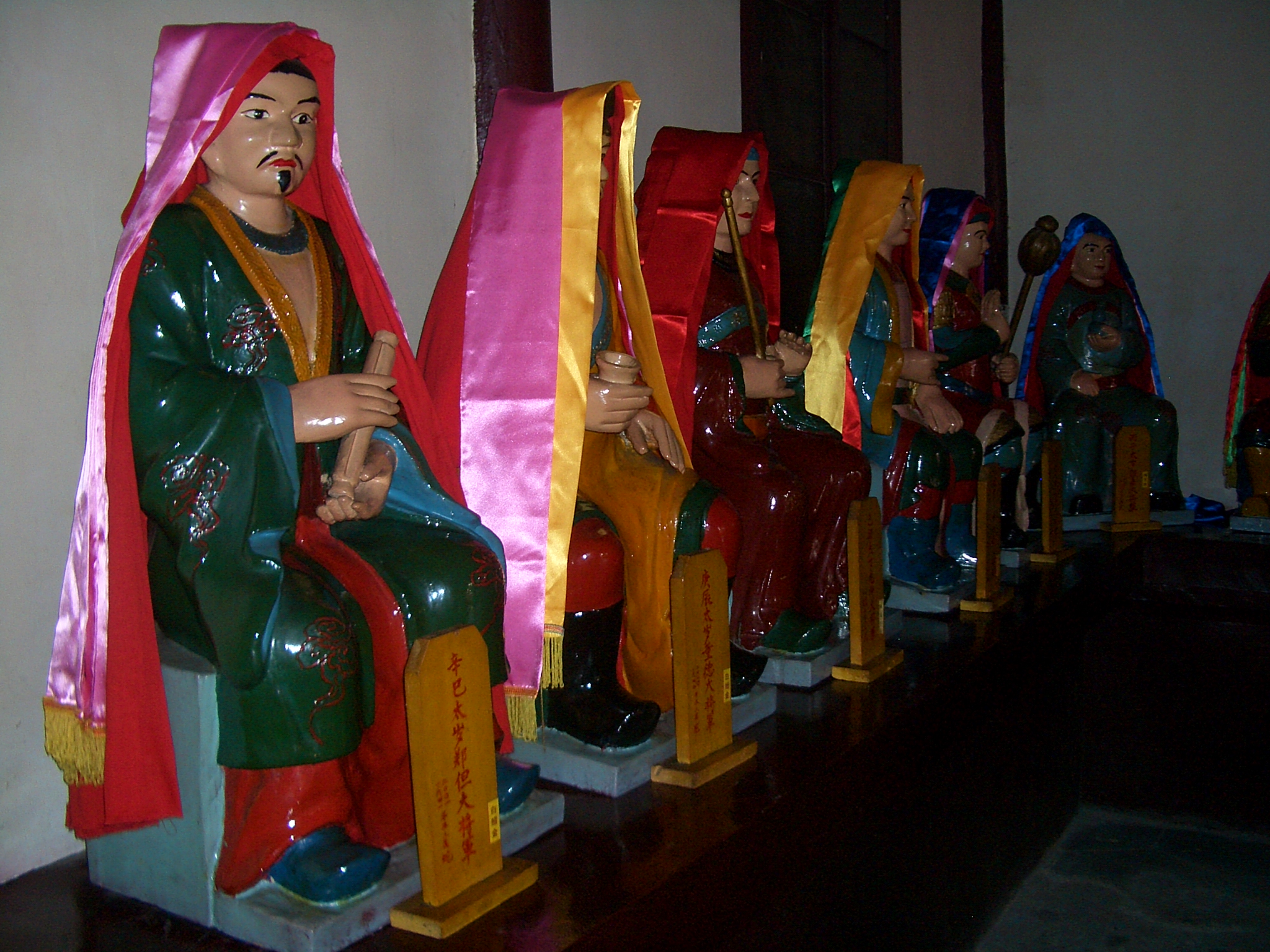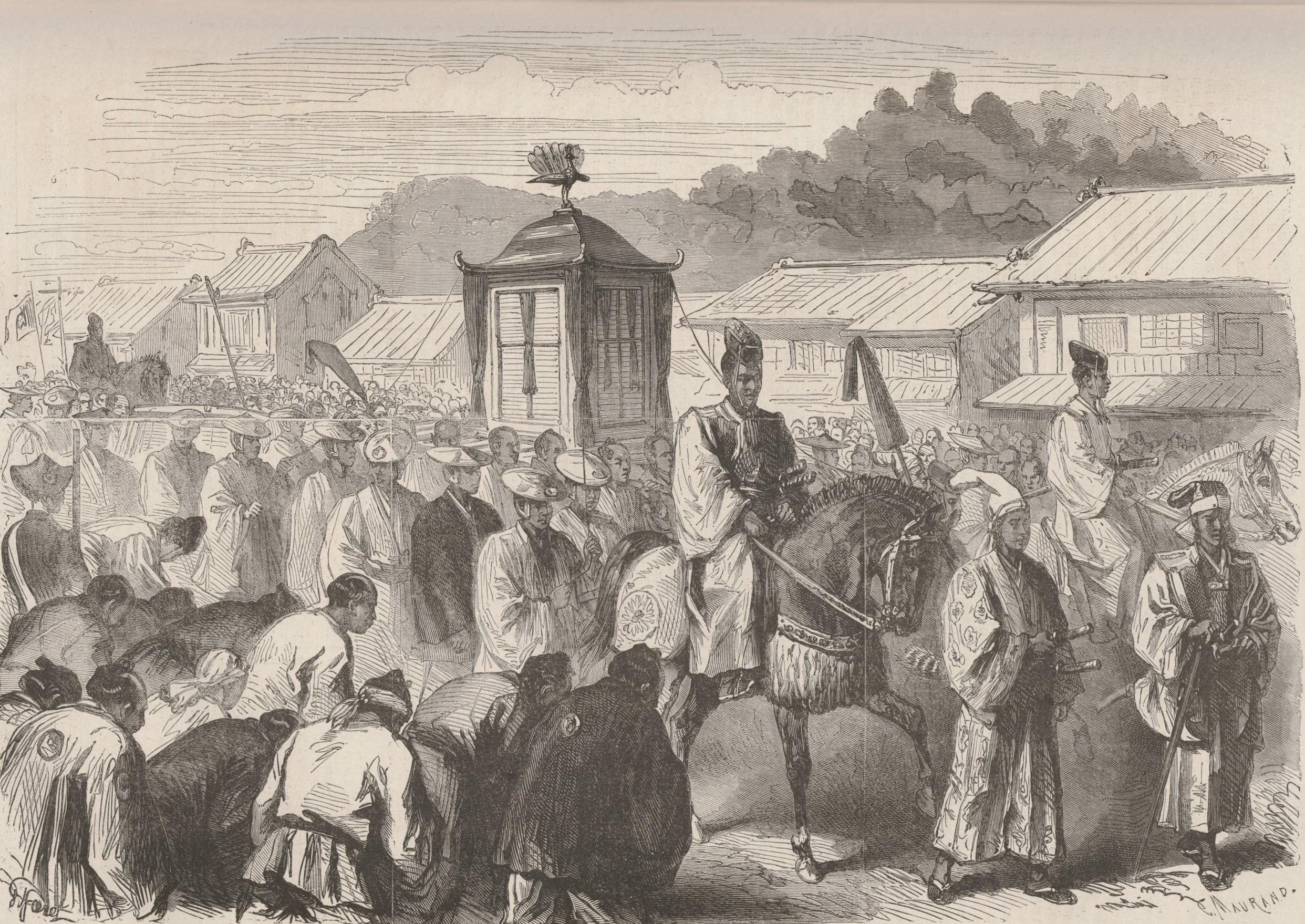|
Nengō
The or , is the first of the two elements that identify years in the Japanese era calendar scheme. The second element is a number which indicates the year number within the era (with the first year being "", meaning "origin, basis"), followed by the literal "" meaning "year". Era names originated in 140 BCE in Imperial China, during the reign of the Emperor Wu of Han. As elsewhere in the Sinosphere, the use of era names was originally derived from Chinese imperial practice, although the Japanese system is independent of the Chinese, Korean, and Vietnamese era name systems. Unlike its other Sinosphere counterparts, Japanese era names are still in official use. Government offices usually require era names and years for official papers. The five era names used since the end of the Edo period in 1868 can be abbreviated by taking the first letter of their romanized names. For example, S55 means Shōwa 55 (i.e. 1980), and H22 stands for Heisei 22 (2010). At 62 years and 2 weeks, ... [...More Info...] [...Related Items...] OR: [Wikipedia] [Google] [Baidu] |
Emperor Of Japan
The emperor of Japan is the hereditary monarch and head of state of Japan. The emperor is defined by the Constitution of Japan as the symbol of the Japanese state and the unity of the Japanese people, his position deriving from "the will of the people with whom resides sovereign power". The Imperial Household Law governs the line of Succession to the Japanese throne, imperial succession. Pursuant to his constitutional role as a national symbol, and in accordance with rulings by the Supreme Court of Japan, the emperor is personally sovereign immunity, immune from prosecution. By virtue of his position as the head of the Imperial House of Japan, Imperial House, the emperor is also recognized as the head of the Shinto religion, which holds him to be the direct descendant of the sun goddess Amaterasu. According to tradition, the office of emperor was created in the 7th century BC, but the first historically verifiable emperors appear around the 5th or 6th centuries Anno Domini, AD ... [...More Info...] [...Related Items...] OR: [Wikipedia] [Google] [Baidu] |
Chinese Era Name
Chinese era names, also known as reign mottos, were titles used by various Dynasties of China, Chinese dynasties and regimes in History of China#Imperial China, Imperial China for the purpose of regnal year, year identification and numbering. The first monarch to adopt era names was the Emperor Wu of Han in 140 BCE, and this system remained the official method of year identification and numbering until the establishment of the Republic of China (1912–1949), Republic of China in 1912 CE, when the era name system was superseded by the Republic of China calendar. Other polities in the Sinosphere—Korean era name, Korea, Vietnamese era name, Vietnam and Japanese era name, Japan—also adopted the concept of era name as a result of Chinese politico-cultural influence. Description Chinese era names were titles adopted for the purpose of identifying and numbering years in Imperial China. Era names originated as mottos or slogans chosen by the reigning List of Chinese monarchs, monarc ... [...More Info...] [...Related Items...] OR: [Wikipedia] [Google] [Baidu] |
Hirohito
, Posthumous name, posthumously honored as , was the 124th emperor of Japan according to the traditional order of succession, from 25 December 1926 until Death and state funeral of Hirohito, his death in 1989. He remains Japan's longest-reigning emperor as well as one of the world's List of longest-reigning monarchs, longest-reigning monarchs. As emperor during the Shōwa era, Hirohito oversaw the rise of Japanese militarism, List of territories acquired by the Empire of Japan, Japan's expansionism in Asia, the outbreak of the Second Sino-Japanese War and World War II, and the postwar Japanese economic miracle. Hirohito was born during the reign of his paternal grandfather, Emperor Meiji, as the first child of the Crown Prince Yoshihito and Crown Princess Sadako (later Emperor Taishō and Empress Teimei). When Emperor Meiji died in 1912, Hirohito's father ascended the throne, and Hirohito was proclaimed crown prince and heir apparent in 1916. In 1921, he made an official visit ... [...More Info...] [...Related Items...] OR: [Wikipedia] [Google] [Baidu] |
Chichibu
is a city located in Saitama Prefecture, Japan. , the city had an estimated population of 61,159 in 26,380 households and a population density of . The total area of the city is . Geography Chichibu is in the westernmost part of Saitama. Unlike other parts of the prefecture, it is largely mountainous and the population is concentrated in river terraces along the Arakawa River. It is Saitama's largest municipality in terms of surface area and shares borders with Tokyo, Yamanashi, Nagano and Gunma Prefectures. A large portion of the city belongs to Chichibu Tama Kai National Park. Because the region is not suitable for growing rice, many people have traditionally depended on sericulture (silk farming). Limestone from Mount Bukō, which rises south of the city center, is another major source of income for the region. The city is shifting its focus toward sightseeing, taking advantage of its rich natural environment and relative closeness to the Tokyo metropolitan area. The ci ... [...More Info...] [...Related Items...] OR: [Wikipedia] [Google] [Baidu] |
Onmyōdō
is a technique that uses knowledge of astronomy and calendars to divine good fortune in terms of date, time, direction and general personal affairs, originating from the philosophy of the yin-yang and the five elements. The philosophy of yin and yang and '' wuxing'' was introduced to Japan at the beginning of the 6th century, and, influenced by Taoism, Buddhism, and Confucianism, evolved into the earliest system of around the late 7th century. In 701, the Taiho Code established the departments and posts of who practiced in the Imperial Court, and was institutionalized. From around the 9th century during the Heian period, interacted with Shinto and in Japan, and developed into a system unique to Japan. Abe no Seimei, who was active during the Heian period, is the most famous ( practitioner) in Japanese history and has appeared in various Japanese literature in later years. was under the control of the imperial government, and later its courtiers, the Tsuchimikado family, ... [...More Info...] [...Related Items...] OR: [Wikipedia] [Google] [Baidu] |
Sexagenary Cycle
The sexagenary cycle, also known as the gānzhī (干支) or stems-and-branches, is a cycle of sixty terms, each corresponding to one year, thus amounting to a total of sixty years every cycle, historically used for recording time in China and the rest of the East Asian cultural sphere, as well as in Southeast Asia. It appears as a means of recording days in the first Chinese written texts, the oracle bones of the late second millennium BC Shang dynasty. Its use to record years began around the middle of the 3rd century BC. The cycle and its variations have been an important part of the traditional calendrical systems in Chinese-influenced Asian states and territories, particularly those of Japan, Korea, and Vietnam, with the old Chinese system still in use in Taiwan, and in Mainland China. In India, the Ahom people (descendants of the Dai people of Yunnan who migrated to Assam in the 13th century) also used the sexagenary cycle known as Lak-Ni. This traditional metho ... [...More Info...] [...Related Items...] OR: [Wikipedia] [Google] [Baidu] |
Meiji Period
The was an era of Japanese history that extended from October 23, 1868, to July 30, 1912. The Meiji era was the first half of the Empire of Japan, when the Japanese people moved from being an isolated feudal society at risk of colonization by Western powers to the new paradigm of a modern, industrialized nation state and emergent great power, influenced by Western scientific, technological, philosophical, political, legal, and aesthetic ideas. As a result of such wholesale adoption of radically different ideas, the changes to Japan were profound, and affected its social structure, internal politics, economy, military, and foreign relations. The period corresponded to the reign of Emperor Meiji. It was preceded by the Keiō era and was succeeded by the Taishō era, upon the accession of Emperor Taishō. The rapid modernization during the Meiji era was not without its opponents, as the rapid changes to society caused many disaffected traditionalists from the former samu ... [...More Info...] [...Related Items...] OR: [Wikipedia] [Google] [Baidu] |
Taika Reform
The were a set of doctrines established by Emperor Kōtoku (孝徳天皇 ''Kōtoku tennō'') in the year 645. They were written shortly after the death of Prince Shōtoku and the defeat of the Soga clan (蘇我氏 ''Soga no uji''), uniting Japan. The reforms also artistically marked the end of the Asuka period and the beginning of the Hakuhō period. Crown Prince Naka no Ōe (the future Emperor Tenji), Nakatomi no Kamatari, and Emperor Kōtoku jointly embarked on the details of the Reforms. Emperor Kōtoku then announced the era of " Taika" (大化), or "Great Reform". The Reform began with land reform, based on Confucian ideas and philosophies from Tang China, but the true aim of the reforms was to bring about greater centralization and to enhance the power of the imperial court, which was also based on the governmental structure of China. Envoys and students were dispatched to China to learn seemingly everything from the Chinese writing system, literature, religion, and ... [...More Info...] [...Related Items...] OR: [Wikipedia] [Google] [Baidu] |



